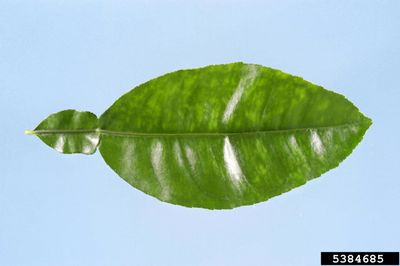Citrus Psorosis Symptoms
Citrus psorosis symptoms, which affect primarily citrus trees at least eight to 10 years old, include patches of bark with small bubbles or pustules. The affected areas eventually turn into scaly patches that may callus or slough away in strips. Gummy lesions form on and under the bark. Young leaves may display mottling and yellow flecks, which often fade as the season progresses. The fruit of infected citrus trees is inedible and may, in severe cases, develop a mottled appearance and depressed, gray or yellowish rings.
What Causes Citrus Psorosis?
Citrus psorosis is a viral disease, transmitted primarily by grafts of infected budwood, or sometimes by contaminated grafting tools. In some types of citrus, the disease is carried by infected seeds.
How to Prevent Citrus Psorosis?
Purchase certified disease-free trees or budwood from a reputable nursery. This is the primary way to prevent citrus psorosis. If you graft trees, ensure your tools are sanitized regularly.
Treating Citrus Psorosis
You can try to scrape away infected bark, which may help temporarily by stimulating growth of a callus on the wound. However, replacement of diseased citrus trees is usually the best option, as an infected tree will be substantially less productive than healthy citrus trees and will slowly die.
